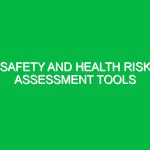Utility workers are the backbone of essential services, ensuring that electricity, water, gas, and telecommunications reach our homes and businesses. However, the nature of their work exposes them to numerous hazards, making robust safety practices crucial. This article delves into the various safety practices for utility workers, illuminating their significance within the Health, Safety, and Environment (HSE) framework. By understanding the risks, implementing safety precautions, and adhering to regulations, utility workers can protect themselves and their colleagues while maintaining a high standard of service.
Understanding Safety Practices for Utility Workers
Safety practices for utility workers encompass a set of procedures and guidelines designed to mitigate risks associated with their work environment. These practices address everything from the use of personal protective equipment (PPE) to emergency response protocols. The relevance of these practices in HSE cannot be overstated; effective safety measures not only safeguard workers but also enhance operational efficiency and reduce the incidence of workplace accidents.
Potential Hazards and Risks in Utility Work
Utility work involves a variety of tasks, each presenting unique hazards. Understanding these risks is the first step toward effective safety management. Here are some of the most common hazards:
Electrical Hazards
Electricity is a fundamental component of utility work, but it also poses significant risks. Electric shock, arc flash, and electrical burns are some of the dangers workers face. For instance, a personal anecdote from a veteran lineman illustrates this risk: during a routine maintenance job, a slight oversight while handling a live wire resulted in a near-fatal shock. This incident underscored the importance of constant vigilance and adherence to safety protocols.
Working at Heights
Many utility workers frequently operate at heights, whether on towers, poles, or roofs. Falls are a leading cause of injuries in this line of work. Proper fall protection systems, such as harnesses and guardrails, are essential. The Occupational Safety and Health Administration (OSHA) mandates that employers provide appropriate fall protection when employees are working at heights above six feet.
Hazardous Materials
Utility workers often encounter hazardous materials, including chemicals used in water treatment or gas pipeline maintenance. Exposure to these substances can lead to serious health issues. For example, a case study from a water treatment facility revealed that improper handling of chlorine resulted in respiratory problems for several employees. Understanding Material Safety Data Sheets (MSDS) and proper storage protocols is vital for minimizing these risks.
Traffic Hazards
Utility workers frequently operate in or near roadways, exposing them to traffic hazards. Struck-by incidents are common, especially during utility maintenance or emergency repairs. Proper signage, traffic control measures, and high-visibility clothing are essential for protecting workers in these situations.
Environmental Factors
Weather conditions can also pose risks. Extreme heat or cold, rain, or high winds can significantly impact safety. For instance, a winter storm may create slippery surfaces, increasing the risk of falls. Workers must be trained to recognize these environmental risks and adapt their practices accordingly.
Safety Precautions and Best Practices
With a clear understanding of the hazards, the next step is to implement effective safety precautions. Here are some actionable best practices for utility workers:
1. Personal Protective Equipment (PPE)
PPE is a critical component of safety practices. Utility workers should wear appropriate gear, including hard hats, gloves, safety glasses, and steel-toed boots. For tasks involving electrical work, insulated gloves and face shields are essential. Regular training on how to properly use and maintain PPE can significantly reduce injury rates.
2. Training and Education
Continuous training is essential in the ever-evolving utility sector. Workers should be educated on the specific hazards they may encounter, the proper use of equipment, and emergency response protocols. For instance, a utility company that implemented regular safety drills significantly reduced its accident rate over two years. Training should also encompass the correct procedures for using tools and operating machinery safely.
3. Safety Protocols and Procedures
Establishing clear safety protocols is vital. Workers should adhere to established procedures for tasks such as lockout/tagout when servicing equipment. A real-life example illustrates this: a worker who neglected lockout procedures while repairing a transformer narrowly escaped a serious injury. This incident serves as a reminder that strict adherence to safety protocols can prevent accidents.
4. Communication and Reporting
Effective communication is crucial in maintaining safety. Workers should feel empowered to report unsafe conditions without fear of reprisal. Regular safety meetings can facilitate open discussions about hazards and encourage a culture of safety within the organization.
5. Regular Inspections and Maintenance
Conducting regular inspections of tools, equipment, and work sites is essential to identify potential hazards before they lead to accidents. For example, a utility company that instituted weekly safety audits saw a decrease in mechanical failures and associated injuries. Maintenance of equipment should also be prioritized to ensure safe operation.
6. Emergency Response Plans
Utility workers should be familiar with emergency response plans tailored to their specific work environment. These plans should include evacuation routes, emergency contact numbers, and procedures for dealing with various incidents, such as electrical fires or gas leaks. A well-prepared workforce can respond effectively in emergencies, minimizing harm to individuals and property.
Regulations and Standards Governing Utility Worker Safety
Several regulations govern the safety practices for utility workers. Key standards include:
Occupational Safety and Health Administration (OSHA)
OSHA sets forth regulations that utility companies must comply with to ensure worker safety. These include requirements for PPE, fall protection, and general duty to maintain a safe workspace. Utility employers are required to keep their workers informed about hazards and train them on safety practices.
National Electrical Safety Code (NESC)
The NESC provides guidelines for the safe installation, operation, and maintenance of electrical supply and communication lines. Compliance with these standards is critical for preventing electrical hazards and ensuring worker safety.
Environmental Protection Agency (EPA)
The EPA oversees regulations concerning hazardous materials and waste management. Utility workers must be trained to handle hazardous substances in compliance with EPA guidelines to avoid environmental contamination and health risks.
State Regulations
In addition to federal regulations, individual states may have specific safety standards that utility workers must follow. Companies need to stay informed about local regulations and ensure compliance to protect their workers effectively.
Conclusion: A Commitment to Safety
Safety practices for utility workers are not just a regulatory requirement; they are a commitment to the well-being of individuals who play a vital role in our society. By understanding the hazards associated with utility work, implementing robust safety precautions, and adhering to regulatory standards, utility companies can create a safer working environment. Each worker’s proactive approach to safety contributes to a culture of accountability and vigilance, ensuring that everyone goes home safely at the end of the day. In the world of utility work, safety is not merely a set of practices; it is a way of life.


